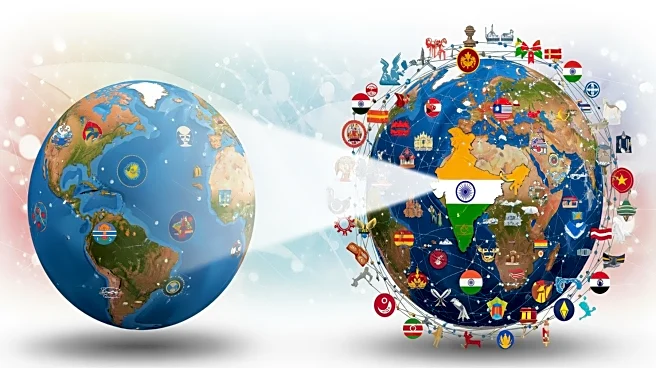What's Happening?
The Pacific Asia Travel Association (PATA) has reported a substantial recovery in international visitor arrivals (IVAs) across the Asia Pacific region. In the first half of 2025, IVAs reached 295.7 million,
marking a 5.4% year-on-year increase and a 92.6% recovery compared to pre-pandemic levels. China and the USA were among the top-performing destinations, with China welcoming over 127 million visitors and the USA seeing over 72 million arrivals. The report highlights the role of Asia as the primary engine of growth, accounting for 72.7% of the region's total IVAs in 2024. The upward trend is expected to continue throughout 2025, transitioning to stable growth patterns.
Why It's Important?
The recovery in tourism is crucial for the economic revitalization of the Asia Pacific region, which heavily relies on tourism as a key economic driver. The increase in visitor arrivals signifies a return to pre-pandemic levels, providing a boost to local economies, hospitality industries, and related sectors. However, the surge in tourism also presents challenges such as environmental degradation and strain on infrastructure, necessitating discussions on sustainable tourism practices. The report underscores the importance of diversifying markets and investing in long-term sustainability to ensure steady growth.
What's Next?
The Asia Pacific region is expected to continue its growth trajectory in tourism, with opportunities arising from the expansion of low-cost carriers and the emergence of India as a major market. However, challenges such as geopolitical tensions and climate risks remain. Destinations are encouraged to diversify their markets and strengthen public-private collaboration to transform recovery into resilience. The focus will be on adapting to shifting market conditions and traveler expectations to sustain growth.
Beyond the Headlines
The recovery in tourism highlights the need for sustainable practices to mitigate environmental impacts. The report suggests that destinations should invest in infrastructure and transport links while promoting cultural preservation. The role of low-cost carriers in making travel more accessible is emphasized, alongside the need for strategic diversification beyond traditional tourism offerings.












